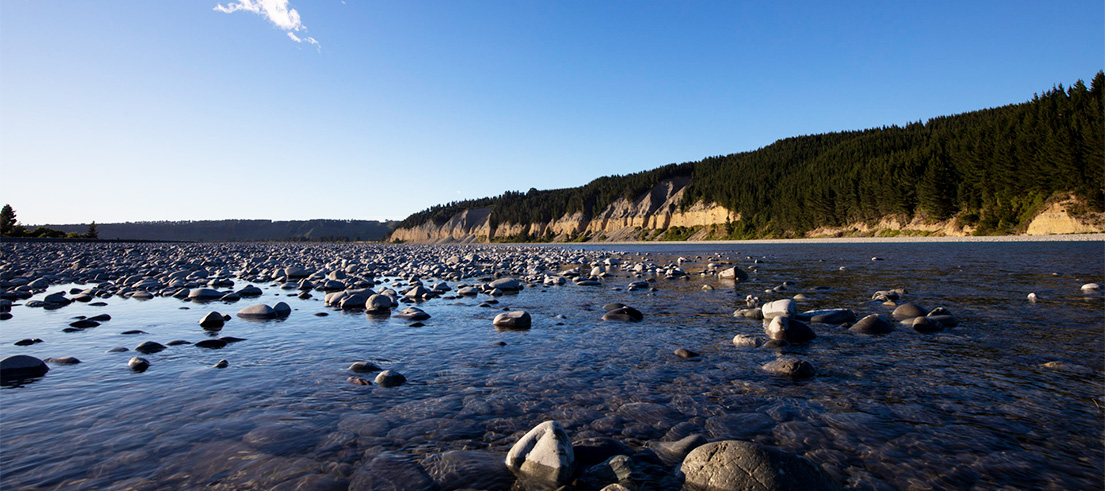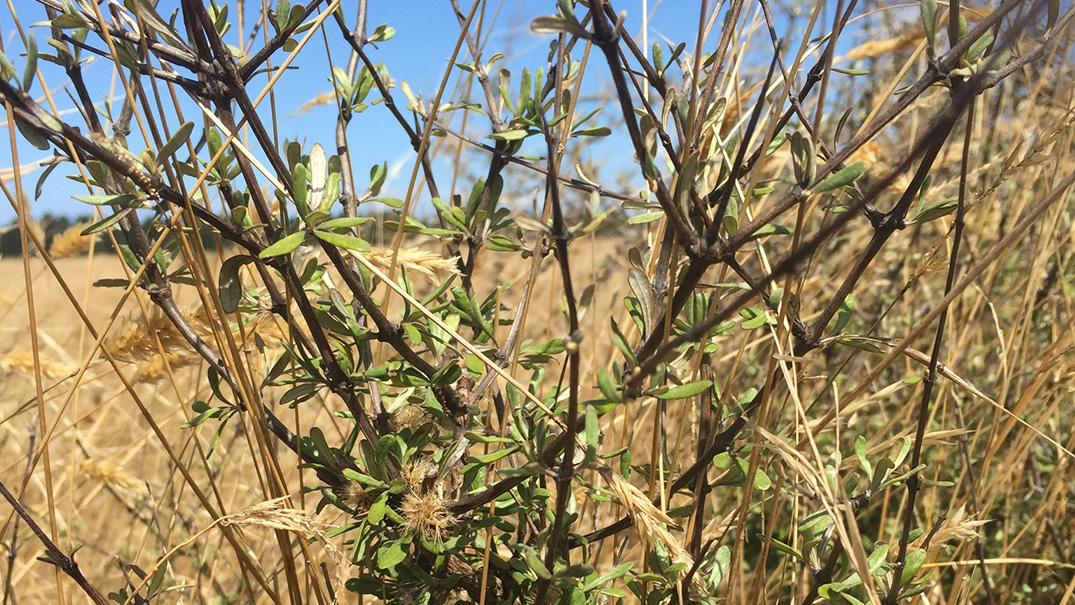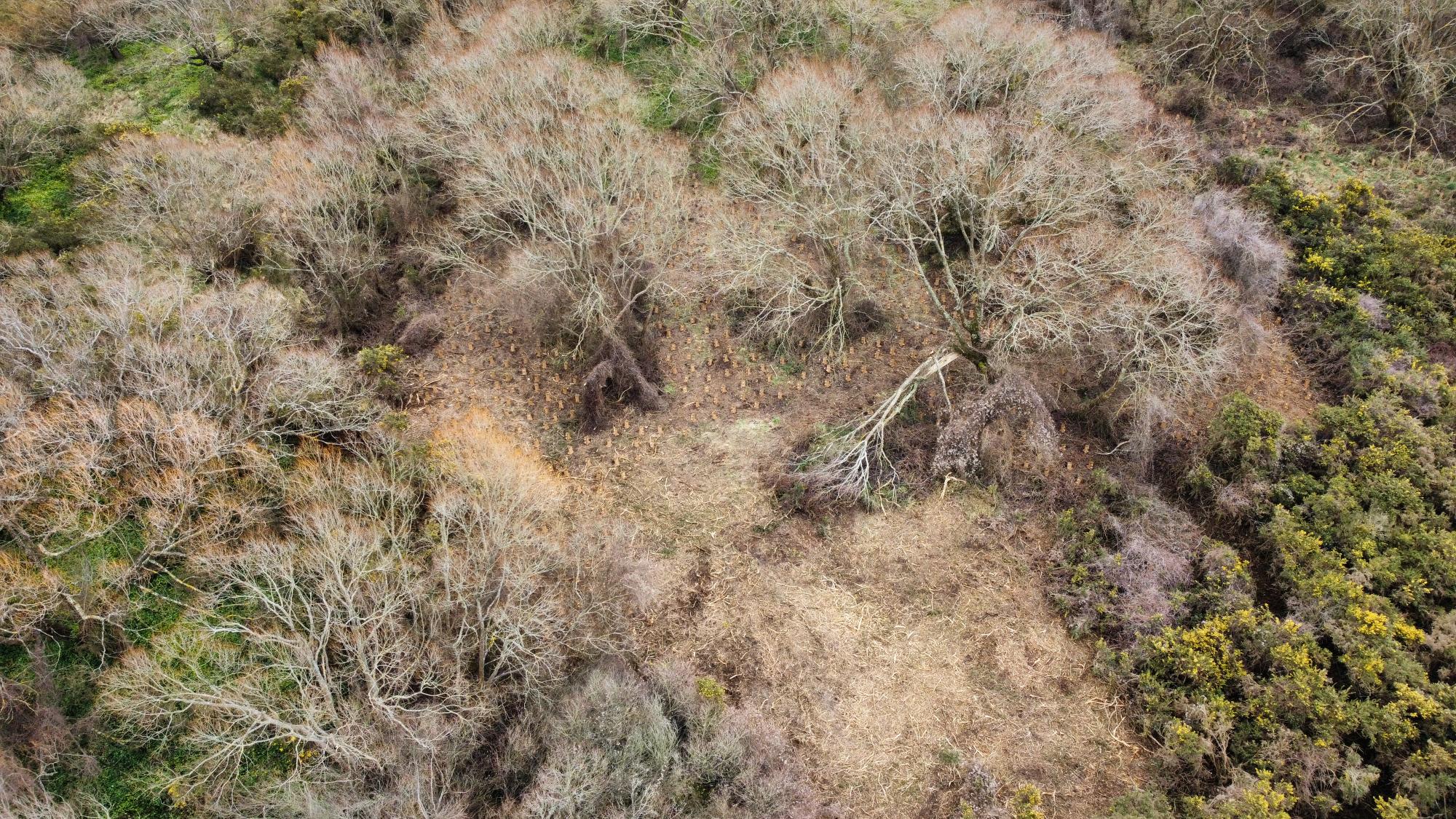
Ancient treasures of Rakaia - Taonga tawhito o te awa ko Rakaia
Large areas of the Rakaia River berm remain as tākata whenua might have experienced it when making rugged Aotearoa their home and our project aims to keep it that way.
Sections of the awa escaped modification, leaving swaths of native plants intact, including a significant dryland area near Te Pirita, where some of our most threatened plant species can still be found. In terms of the short human history of Aotearoa, this area is prehistoric, enduring much like the tuatara though with considerably less mainstream acknowledgement.
Our berm transition project is using weed control and native underplanting to increase flood protection, conserving significant flora like fan-leaved mat daisy (Raoulia monroi), Canterbury Plains tree daisy (Olearia adenocarpa), and prickly couch (Zoysia minima), as well as maintaining and creating habitat for lizards including McCann's skink, Canterbury grass skink, and the Waitaha gecko.
Braided River Revival regional lead Greg Stanley said, "the site has massive ecological significance because there are large areas within the wider site that are possibly the same as they've always been".
The berm transition programme
As part of the wider berm transition project, we are transforming sites on 23 rivers throughout Waitaha Canterbury through planting and targeted weeding.
Targeted weeding means leaving flood protection trees, native undergrowth and native forest untouched while eliminating pest plants like old man's beard and sycamore.
Check out the transition sites by your river on our online map.
The Regionwide Berm Transition Project is part-funded by the Ministry of Business, Innovation and Employment's Kānoa — Regional Economic Development and Investment Unit (64 per cent), with the remainder co-funded by us through a combination of partner contributions and operation funding/rates.
Protecting threatened plants
The natural state of the Rakaia is a broad, open, treeless expanse. Besides several locations, much of the river berm is weed infested, including the site at Te Pirita. Even so, Greg said, "we've been really lucky with what native vegetation has been retained".
"Weeding supports the native plant communities and planting protects them from floods," principal biodiversity officer Jason Butt explained, "but planting in the wrong place could destroy these rare plant communities."
The significance of that plant life meant appropriate care and precision were required when working on the Crown-owned land, managed by Toitū Te Whenua Land Information New Zealand (LINZ), and a significant vegetation survey was conducted by local botanist Melissa Hutchison.
"At Rakaia, there are plants that you're not going to see anywhere outside the Canterbury Plains, so you can't risk doing it wrong; you've got to know exactly what action you can take in which location," Greg explained of our site mission to 'knock out' targeted weeds so these sites on the Rakaia don't fall to the same fate as other river berms.
Jason discovered the remnant Canterbury Plains tree daisy along the Rakaia almost a decade ago. His partner said he "almost snapped his neck" with the speed of his double-take.
"It was the botanical equivalent of spotting a takahe walking by; these shrubs are that rare," he recalled.
"The Rakaia is the largest area of natural river terrace left on the Canterbury Plains and our last chance to see what first European settlers saw when they travelled over large areas of the Plains," he said of the area's conservation value.
Battle of the berm: pest vs native plant species
Last year, 13,900 native plant species, including tauhinu, ribbonwood, harakeke, and tī kouka, were planted at all Rakaia sites, excluding the area at Te Pirita, and almost 5000 will go in the ground this year. However, it's the weed control aspect of the project that will have the biggest conservation impact.
Wilding pine, old man's beard, barberry, sycamore trees, hawthorn, and cotoneaster are a few of the pest species on the hit list and all for good reason.
Dani Devine, regeneration project supervisor, said, "old man's beard climbs up exotic flood protection, often pulling whole trees down or smothering them until they die. These flood protection stands are vital for stabilising banks and slowing down flood flows, so this is a big problem.
"Finding ways to prevent the intrusion of weed species into flood protection assets and increasing their function and resilience is a major part of this project. We believe a combination of targeted weed control and native underplanting will be a great solution."
A stronger understanding for future restoration projects
Planting areas are often in the flood plain of braided rivers, as they are here on the Rakaia, which presents the risk of losing plant stock if significant flooding occurs.
"We've identified areas that are prone to flooding, planted entire pockets of species that will tolerate waterlogging, and engaged experienced contractors CityCare for the work," Dani explained.
"We expect the seed source we're establishing in these areas will continue to flourish even if part of a planting asset is lost."
Each site and river within our berm transition projects represent different challenges, but they all add up to forming a stronger understanding for future restoration projects.
"We learn which species work where, their different tolerances, and how best to establish a canopy of evergreen native plants to prevent the intrusion of pest vine species amongst our flood protection trees."
Central Government co-investment
Significant flood protection, biodiversity, and community projects like this have been made possible due to the government's one-off Covid-19 shovel-ready funding. However, climate change-induced events across the country have highlighted the urgent need to remediate outdated flood protection infrastructure.
Currently, regional and unitary councils (collectively, Te Uru Kahika) invest around $200 million each year in flooding protection schemes — about half of what's needed. Check out why Te Uru Kahika is seeking Central Government long-term co-investment (PDF file, 1.7 MB).
Maintenance and upgrades for flood protection assets are no longer sustainable for local communities. We need allied national support to face this challenge together.
Shared investment today means lower overall recovery costs and better protection for the environment and for current and future generations.


